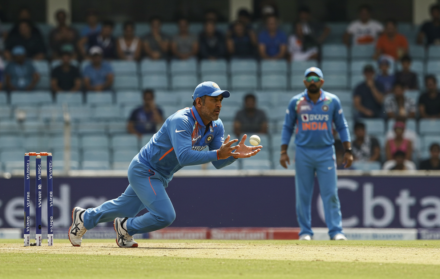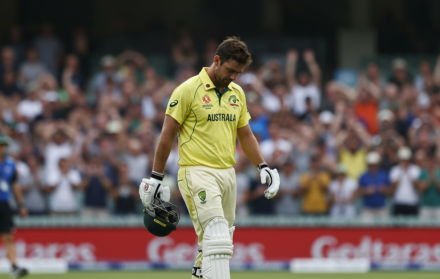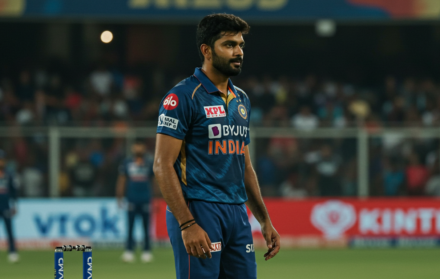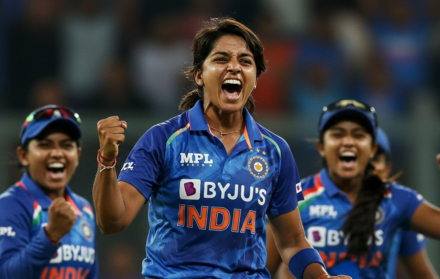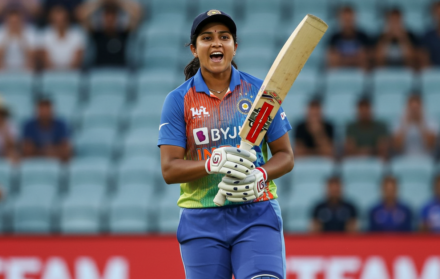
The Evolution of Cricket Fan Culture
The evolution of cricket fan culture is a fascinating journey that reflects the sport’s enduring appeal and its ability to adapt to changing times. From the early days of cricket, where fans would gather at local grounds to watch matches, to the modern era of digital engagement and global tournaments, the way fans interact with the game has undergone a significant transformation.
One of the most notable shifts in recent years has been the increasing importance of fan support in the growth of women’s cricket. As the sport has gained more visibility and popularity, the role of fans has become crucial in promoting and sustaining the women’s game. The strong importance of fan support in women’s cricket is a testament to how cricket fan culture has evolved to be more inclusive and supportive of all aspects of the game.
The evolution of fan culture is also evident in the rise of cricket documentaries. These films offer fans a deeper insight into the sport, its history, and the personalities that have shaped it. With the advent of streaming platforms, cricket documentaries have become more accessible, allowing fans to connect with the game on a more personal level. The popularity of cricket documentaries highlights the growing appetite for content that goes beyond the pitch, offering stories that resonate with fans worldwide.
In addition to traditional media, digital platforms have played a pivotal role in transforming cricket fan culture. Fantasy leagues have become a major part of the fan experience, allowing enthusiasts to engage with the sport in a more interactive and competitive way. The emergence of cricket fantasy leagues has not only increased fan engagement but also fostered a sense of community among participants, who bond over their shared passion for the game.
Podcasts have also become a significant part of the cricket fan experience. These audio shows provide fans with analysis, commentary, and interviews with players, offering a convenient way to stay connected with the sport. The popularity of cricket podcasts reflects the changing ways in which fans consume content, with many preferring the flexibility of listening to discussions on the go.
Moreover, the growth of cricket tourism has added a new dimension to fan culture. Fans are increasingly traveling to attend major cricket tournaments, turning these events into global spectacles. The availability of cricket tours and travel packages has made it easier for fans to experience the thrill of live matches, creating unforgettable memories and deepening their connection to the sport.
Cricket-themed merchandise has also become a significant aspect of fan culture. From jerseys and caps to more unique cricket-themed gifts, fans love to express their allegiance to their favorite teams and players through various products. This trend has further fueled the commercialization of the sport, with merchandise sales becoming a key revenue stream for cricket boards and clubs.
Lastly, cricket betting has seen a surge in popularity, particularly with the advent of online platforms. While it remains a controversial aspect of fan culture, the rise of cricket betting sites reflects the sport’s deep-rooted connection with its fans, who seek to enhance their engagement through wagering.
The evolution of cricket fan culture is a reflection of the sport’s ability to adapt to changing times and technologies. As fans continue to find new ways to engage with cricket, the culture surrounding the sport will undoubtedly continue to evolve, shaping the future of cricket for generations to come.
Early Days of Cricket Fan Culture: Tradition and Community

The evolution of cricket fan culture began with its roots deeply entrenched in tradition and community. In the early days, cricket was more than just a sport; it was a social event that brought communities together. Matches were held on village greens and local fields, often accompanied by picnics and social gatherings. These events were not just about watching the game but also about spending time with friends, family, and neighbors, fostering a sense of community and belonging.
In this era, cricket fans were closely connected to their local teams. The players were often members of the same community, and fans took pride in supporting their local talent. This local connection meant that matches were personal, and the support was intense but also friendly. Rivalries existed, but they were largely good-natured, and the atmosphere at matches was one of camaraderie and shared passion.
The matchday experience during this period was simple but deeply enjoyable. Fans would gather around the boundary with blankets, food, and drinks, cheering on their team and engaging in friendly banter with the opposing side’s supporters. The sound of leather on willow, the sight of players in traditional whites, and the smell of freshly cut grass created an atmosphere that was as much about the sensory experience as it was about the competition on the field.
As cricket began to grow in popularity, especially in England, the culture around it started to take on more organized forms. County cricket became a staple of the summer months, with fans regularly attending matches and following their teams with dedication. The sense of community remained strong, and cricket grounds became central gathering places where fans could connect over their shared love for the game.
The early days of cricket fan culture were characterized by a strong sense of tradition, community, and local pride. Fans were deeply connected to their teams and each other, creating a matchday experience that was as much about socializing and community building as it was about the sport itself. This foundational period set the stage for the evolution of cricket fan culture into what it is today.
The Rise of International Cricket: A New Era for Fans
The evolution of cricket fan culture took a significant turn with the rise of international cricket. As the sport expanded beyond local and county levels, it began to capture the imagination of fans on a much larger scale. International matches introduced a new level of excitement, as fans could now support their national teams, adding a sense of national pride to the passion for cricket. This era marked the beginning of what would become a global phenomenon, with cricket uniting fans across continents.
The introduction of international cricket tournaments like the Ashes series between England and Australia, which began in 1882, played a pivotal role in shaping cricket fan culture. These matches were more than just sporting events; they were symbolic battles between nations, and the stakes were higher. Fans became deeply invested in the outcomes, and the rivalry between teams fueled intense emotions. The Ashes, in particular, became one of the most celebrated rivalries in sports, with fans from both nations passionately supporting their teams, often leading to a vibrant and sometimes fiery atmosphere at the matches.
As international cricket grew, so did the diversity of the fan base. Countries like India, Pakistan, the West Indies, and South Africa embraced the sport, each bringing their unique fan cultures to the global stage. The passion of Indian cricket fans, for example, became legendary, with packed stadiums, vibrant chants, and an unwavering commitment to their team. The subcontinent’s love for cricket added a new dimension to the sport, with fans following every match with a fervor that is unmatched in other sports.
The advent of international cricket also led to the development of fan rituals and traditions that are still celebrated today. For instance, English fans known as the “Barmy Army” became famous for their relentless support of their team, traveling across the world to cheer on England. These fans brought with them songs, chants, and a sense of camaraderie that became a hallmark of cricket fan culture.
In conclusion, the rise of international cricket ushered in a new era for cricket fans, expanding the sport’s reach and intensifying the passion and rivalry that characterize cricket fan culture today. The introduction of national teams and international tournaments transformed cricket from a local pastime into a global phenomenon, uniting fans across the world and laying the foundation for the vibrant and diverse cricket fan culture that we see today.
The Impact of One-Day Internationals and T20 Cricket on Fan Culture

The evolution of cricket fan culture took another significant leap forward with the introduction of One-Day Internationals (ODIs) in the 1970s and later, Twenty20 (T20) cricket in the early 2000s. These shorter formats of the game revolutionized the sport and brought about a dramatic shift in how fans engaged with cricket. The fast-paced nature of ODIs and T20s appealed to a broader audience, making the game more accessible and exciting, and in turn, altering the culture of cricket fandom.
One-Day Internationals introduced a new level of excitement and immediacy to cricket. Unlike the traditional Test matches, which could last up to five days, ODIs were completed in a single day, offering a more intense and action-packed experience. This format attracted a new generation of fans who were drawn to the thrill of seeing a match decided in just a few hours. The shorter format also allowed for the development of more dramatic moments, such as last-over finishes and high-scoring chases, which added to the excitement and kept fans on the edge of their seats.
The rise of ODIs also led to the creation of iconic tournaments like the Cricket World Cup, first held in 1975. The World Cup became a global event, bringing together fans from all over the world to support their teams. The spectacle of the World Cup, with its colorful crowds, intense rivalries, and high stakes, became a defining feature of cricket fan culture. The success of these tournaments solidified the ODI format’s place in the hearts of cricket fans and contributed to the sport’s global appeal.
The introduction of T20 cricket further transformed the fan experience. T20 matches, with their even shorter format of just 20 overs per side, took the excitement of ODIs to another level. The format was designed to be fast, explosive, and entertaining, appealing to fans who wanted quick, high-energy action. T20 cricket attracted a younger audience, many of whom were new to the sport, and its popularity quickly skyrocketed.
The T20 format also introduced new elements to cricket fan culture, such as franchise-based leagues like the Indian Premier League (IPL). The IPL, with its star-studded teams, glitzy opening ceremonies, and high-octane matches, became a cultural phenomenon, drawing in fans from around the world. The league’s success demonstrated how cricket could be packaged as entertainment, blurring the lines between sport and spectacle.
The introduction of ODIs and T20 cricket had a profound impact on cricket fan culture, making the sport more accessible, exciting, and appealing to a broader audience. These formats revolutionized the way fans engage with cricket, bringing new energy and enthusiasm to the game and creating a fan culture that is dynamic, diverse, and ever-evolving.
The Digital Revolution: Social Media and the Globalization of Cricket Fandom
The evolution of cricket fan culture has been greatly accelerated by the digital revolution, particularly with the advent of social media. Platforms like Twitter, Facebook, Instagram, and YouTube have transformed how fans interact with the game, players, and each other, creating a global community of cricket enthusiasts that transcends geographical boundaries. The digital age has not only expanded the reach of cricket but has also fundamentally changed the way fans experience the sport.
Social media has given fans unprecedented access to their favorite players and teams. Cricketers now use platforms like Twitter and Instagram to share insights into their lives, training routines, and behind-the-scenes moments, allowing fans to feel more connected to them than ever before. This direct interaction has fostered a sense of intimacy and loyalty, with fans following every post, tweet, and story with keen interest. The ability to engage with players in real-time, whether through comments, likes, or retweets, has empowered fans and made them active participants in the cricket narrative.
In addition to player interactions, social media has become a hub for fan discussions, debates, and content creation. Cricket fans from around the world can now connect, share opinions, and engage in conversations about matches, strategies, and performances. Hashtags like #CWC19 (Cricket World Cup 2019) and #IPL2023 have trended globally, showcasing the immense popularity of the sport and the power of social media to unite fans. Online fan communities, forums, and fan pages have also emerged, providing spaces where cricket enthusiasts can share their passion, whether it’s through memes, analysis, or fan art.
The digital revolution has also transformed the way fans consume cricket content. Live streaming platforms have made it possible for fans to watch matches from anywhere in the world, breaking down geographical barriers and expanding the sport’s global reach. Highlight reels, player interviews, and match analysis are now available at the click of a button, allowing fans to stay connected to the game even if they can’t watch live. This accessibility has democratized cricket fandom, enabling more people to engage with the sport on their terms.
Moreover, the globalization of cricket fandom has led to the rise of fan influencers and content creators who have built large followings by producing cricket-related content. These influencers provide commentary, analysis, and entertainment, often becoming key voices within the cricket community. Their content not only enhances the fan experience but also contributes to the ongoing evolution of cricket fan culture.
The digital revolution has played a pivotal role in the globalization and evolution of cricket fan culture. Social media has brought fans closer to the game and to each other, creating a vibrant and dynamic global community. As cricket continues to embrace digital platforms, the fan experience will continue to evolve, offering new and exciting ways for fans to engage with the sport they love.
Cricket Fan Culture Today: Diversity, Inclusivity, and Innovation

Today, cricket fan culture is more diverse, inclusive, and innovative than ever before. The evolution of cricket fan culture has been shaped by various factors, including the globalization of the sport, the rise of digital media, and the growing emphasis on inclusivity and representation within the game. As a result, cricket fandom has become a rich tapestry of different cultures, perspectives, and voices, all united by a shared love for the sport.
One of the most significant changes in cricket fan culture today is the increasing emphasis on inclusivity and diversity. Cricket, once seen as a sport dominated by certain regions and demographics, is now celebrated for its ability to bring together people from all walks of life. Women’s cricket, for instance, has seen a surge in popularity, with more fans attending matches, following teams, and engaging with the sport online. The success of events like the ICC Women’s Cricket World Cup and the Women’s Big Bash League has helped to elevate women’s cricket to new heights, inspiring a new generation of fans and players.
Inclusivity also extends to the way cricket is experienced by fans with disabilities. Many cricket grounds and organizations have made significant efforts to improve accessibility, ensuring that all fans can enjoy the game in a comfortable and inclusive environment. This includes the provision of wheelchair-accessible seating, sensory-friendly spaces, and services for visually impaired fans. The commitment to inclusivity within cricket fan culture reflects a broader understanding of the importance of making the sport accessible to everyone.
Innovation continues to play a key role in shaping modern cricket fan culture. From virtual reality (VR) experiences that allow fans to “attend” matches from the comfort of their homes to advanced analytics that provide deeper insights into the game, technology is transforming how fans engage with cricket. Fantasy cricket leagues, where fans can create and manage their own teams, have also become incredibly popular, allowing fans to immerse themselves in the sport in new and interactive ways.
Moreover, cricket fan culture today is characterized by its global nature. Fans from different countries, cultures, and backgrounds come together to celebrate the sport, creating a melting pot of traditions, rituals, and expressions of fandom. This global perspective has enriched cricket fan culture, making it more dynamic and diverse. Whether it’s the colorful and energetic fans of the Caribbean, the passionate supporters of the Indian subcontinent, or the loyal followers of English county cricket, each group brings its unique flavor to the global cricket community.
Cricket fan culture today is a reflection of the sport’s evolution into a global, inclusive, and innovative phenomenon. The diversity of fans, the emphasis on inclusivity, and the embrace of new technologies have all contributed to a vibrant and dynamic cricket fan culture. As cricket continues to grow and evolve, so too will the culture that surrounds it, ensuring that the sport remains a beloved and unifying force for fans around the world.
The Evolution of Cricket Fan Culture: Trends and Predictions

As we look to the future, cricket fan culture is poised to undergo even more transformation. The evolution of cricket fan culture will continue to be influenced by technological advancements, changing social dynamics, and the ongoing globalization of the sport. Here are some key trends and predictions that could shape the future of cricket fan culture.
One of the most significant trends likely to impact cricket fan culture is the continued integration of technology into the fan experience. With the rise of 5G, augmented reality (AR), and artificial intelligence (AI), fans can expect more immersive and personalized experiences. Imagine being able to watch a match through AR glasses that provide real-time statistics, player insights, and even the ability to switch camera angles with a simple gesture. AI could also enhance the way fans interact with the game, from AI-powered chatbots providing match updates to personalized content recommendations based on fan preferences.
The concept of virtual fandom is also expected to grow. As seen during the COVID-19 pandemic, virtual watch parties, online fan meetups, and digital fan engagement became crucial for maintaining the sense of community among cricket fans. In the future, virtual reality (VR) could take this to the next level, allowing fans to virtually attend matches in a fully immersive environment, complete with the sounds, sights, and atmosphere of a live stadium.
Another key trend is the increasing importance of sustainability in cricket fan culture. As concerns about climate change and environmental impact grow, fans are becoming more conscious of the carbon footprint associated with attending matches, traveling to stadiums, and consuming merchandise. Cricket organizations and fans alike are likely to embrace more sustainable practices, from eco-friendly stadiums to green travel options for fans. This shift could lead to a more environmentally conscious fan culture, where sustainability becomes a core value of the cricket community.
The future of cricket fan culture will also see a continued focus on inclusivity and diversity. The success of women’s cricket and the growing representation of underrepresented groups in the sport will likely lead to an even more inclusive fan base. As cricket expands into new markets, such as the United States and China, the sport’s global fan culture will become even more diverse, with new traditions, fan rituals, and cultural influences enriching the cricket experience.
Finally, the role of fan-generated content and social media influencers will continue to grow. As fans become more involved in creating and sharing content, their influence on cricket fan culture will only increase. This democratization of content creation allows fans to shape the narrative of the sport, highlight lesser-known stories, and bring attention to emerging talents. Influencers and fan communities will play a pivotal role in driving conversations, setting trends, and keeping the sport relevant to new generations.
The future of cricket fan culture is bright and full of possibilities. With the integration of cutting-edge technology, a focus on sustainability, a commitment to inclusivity, and the rise of fan-generated content, cricket fan culture will continue to evolve in exciting ways. As fans, we can look forward to a future where the cricket experience is more immersive, connected, and diverse than ever before, ensuring that the sport remains a beloved global pastime for generations to come.
